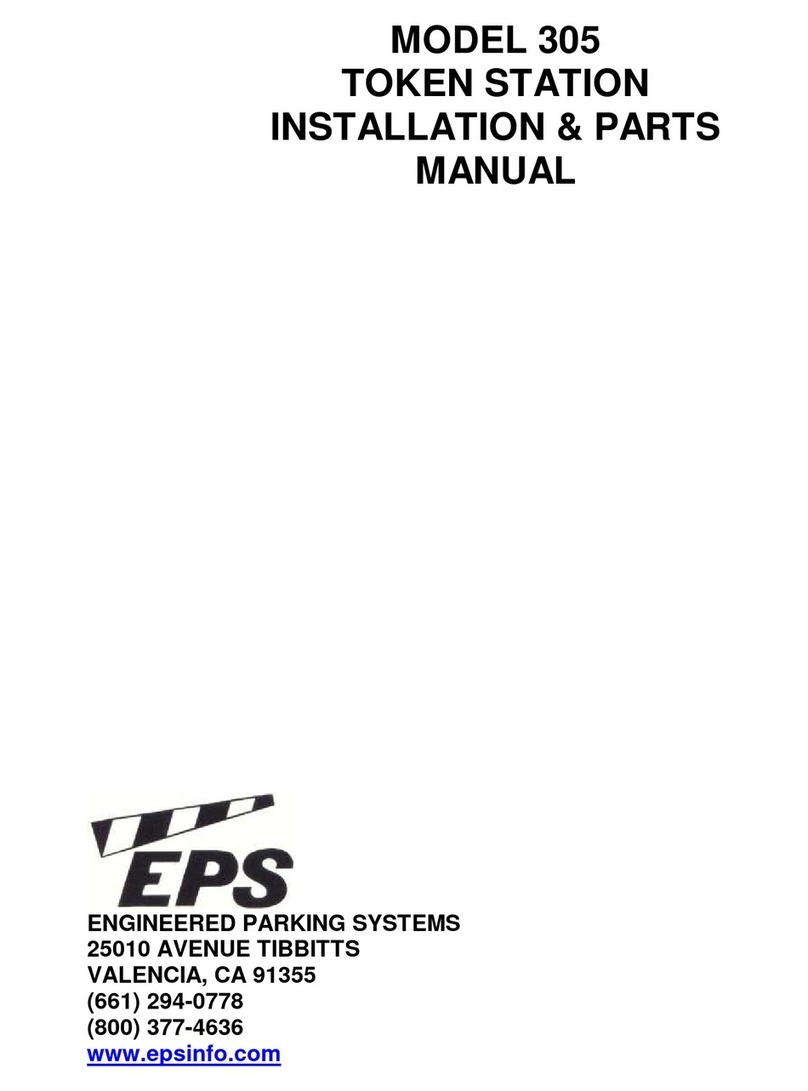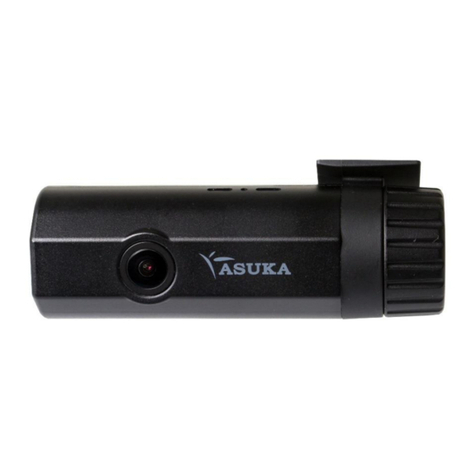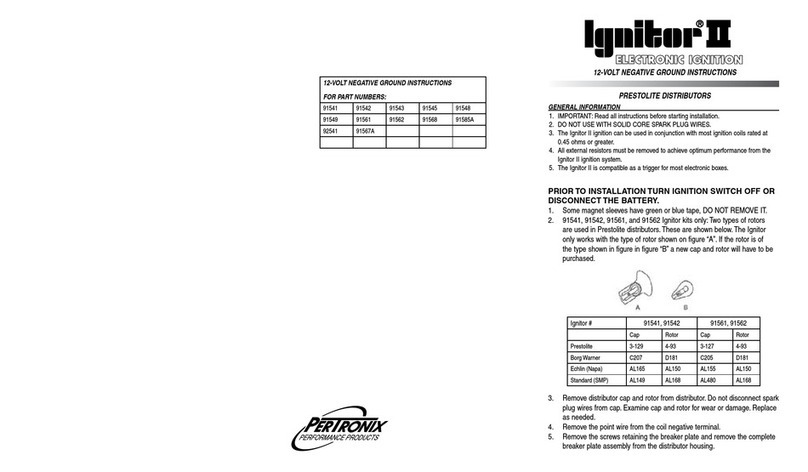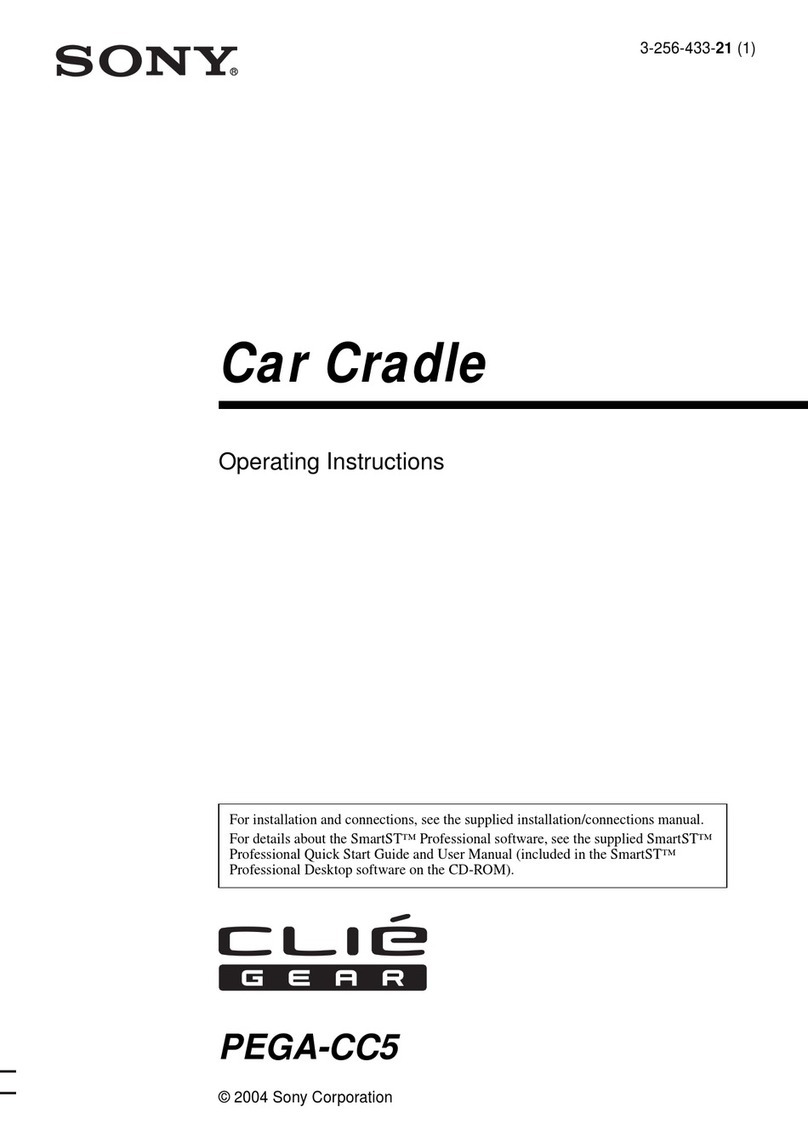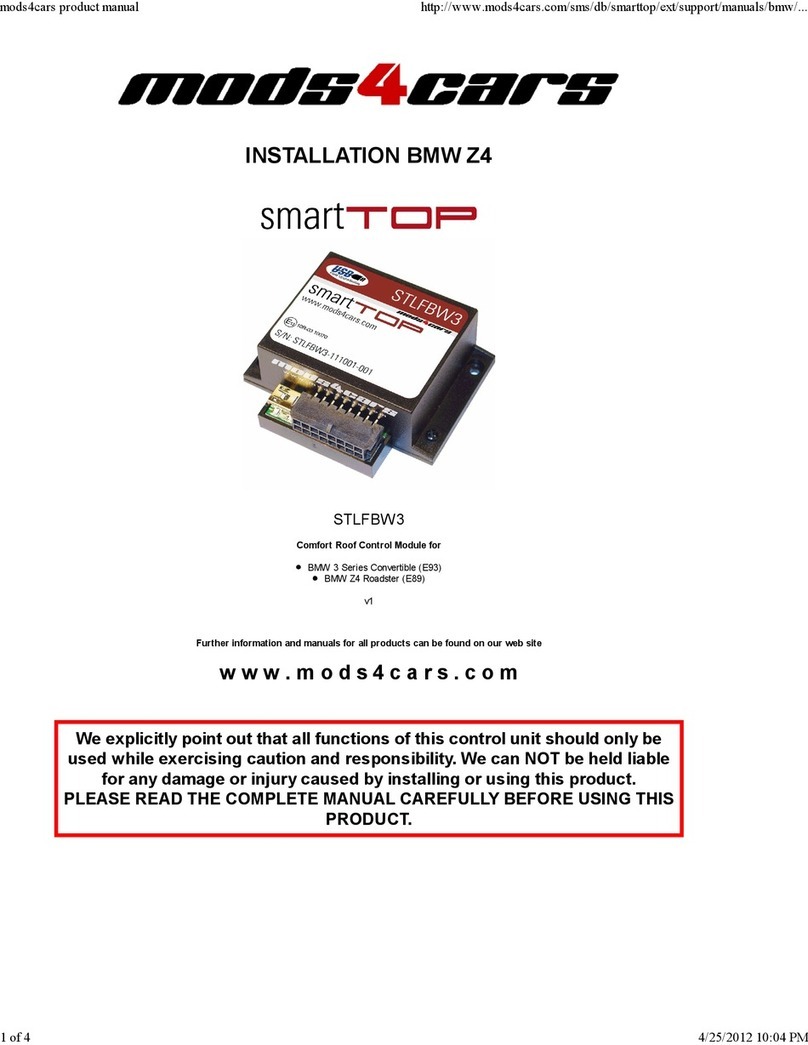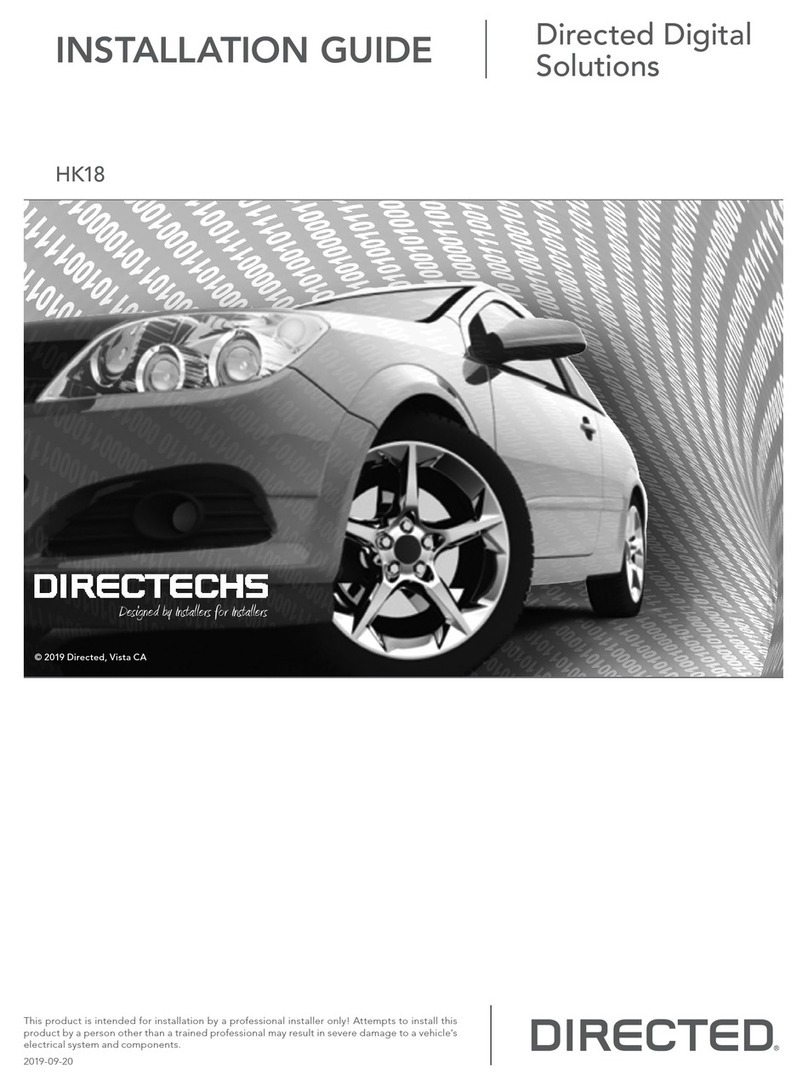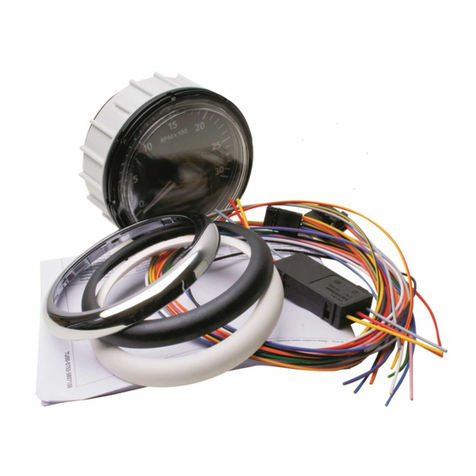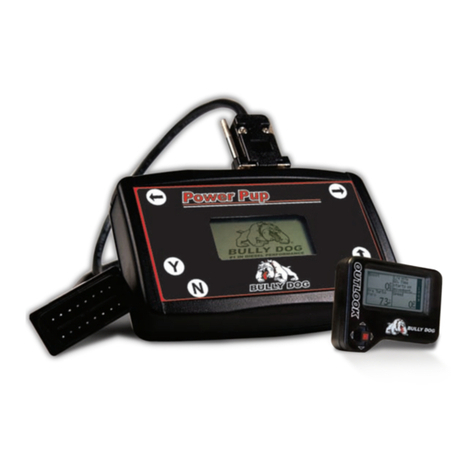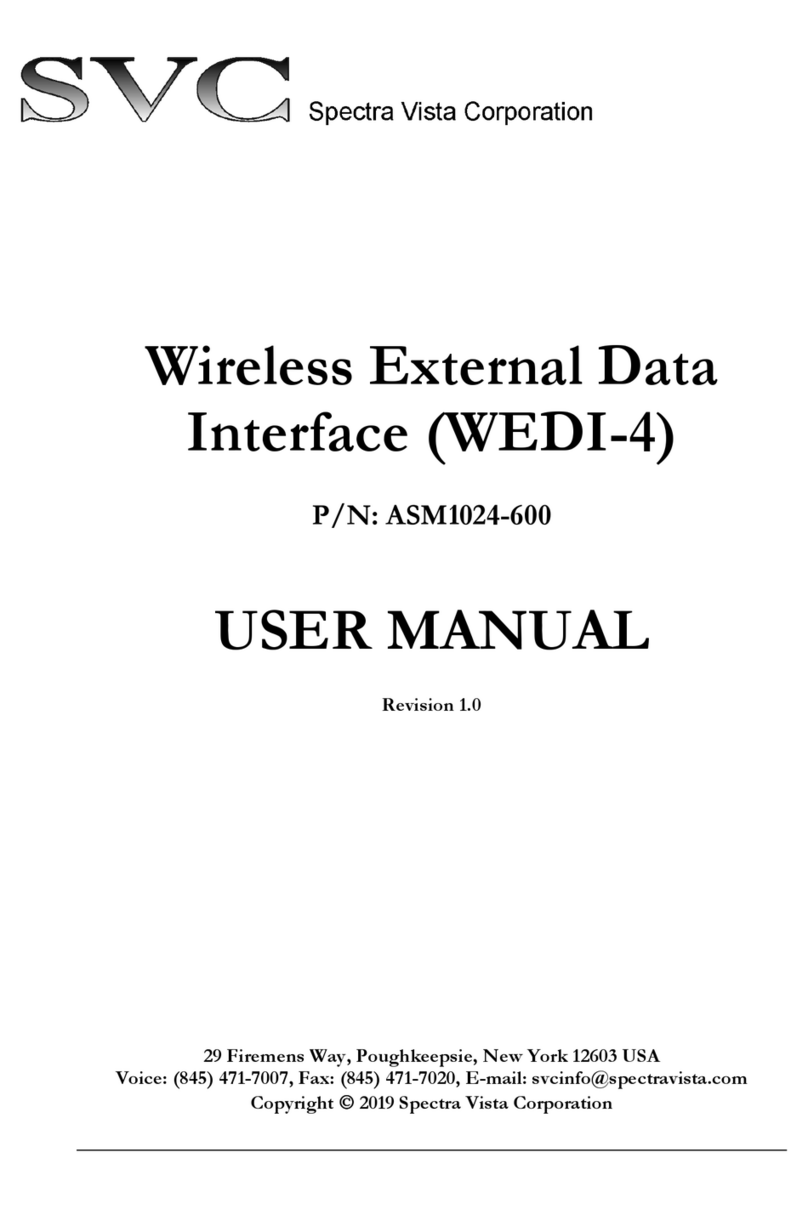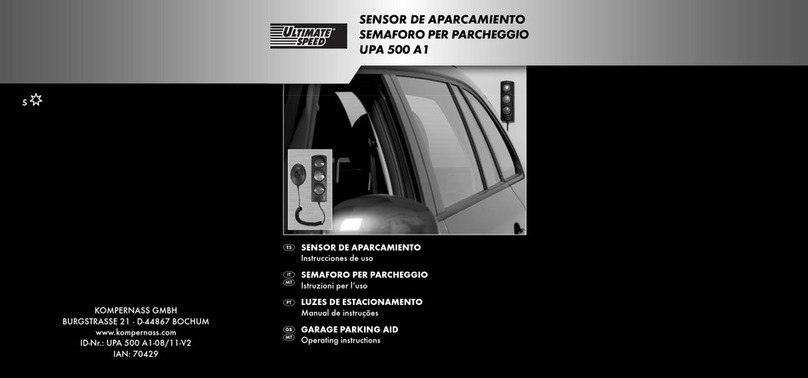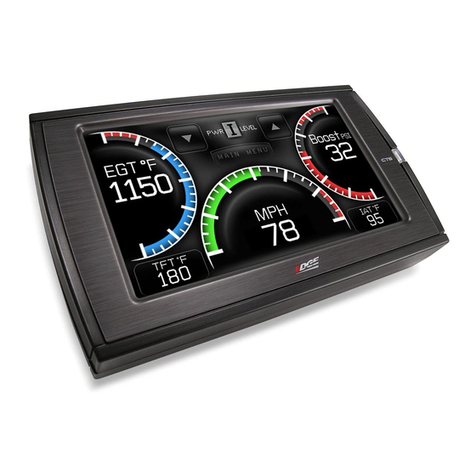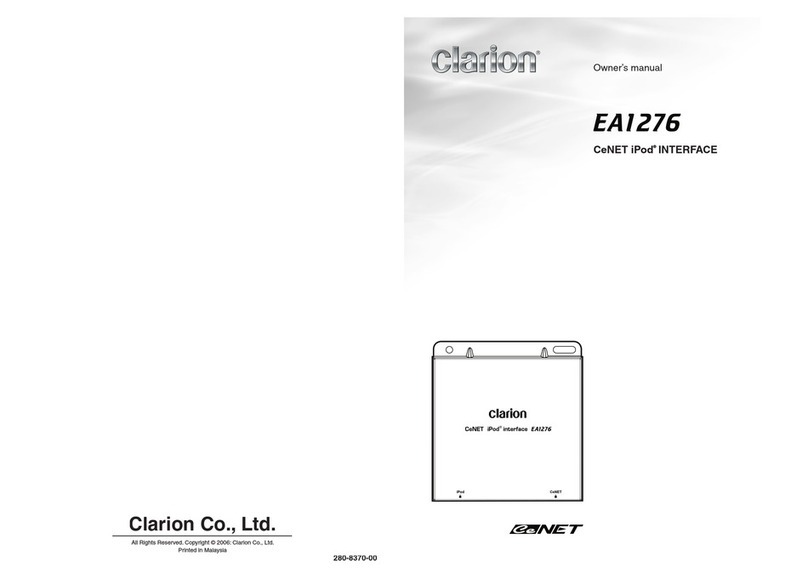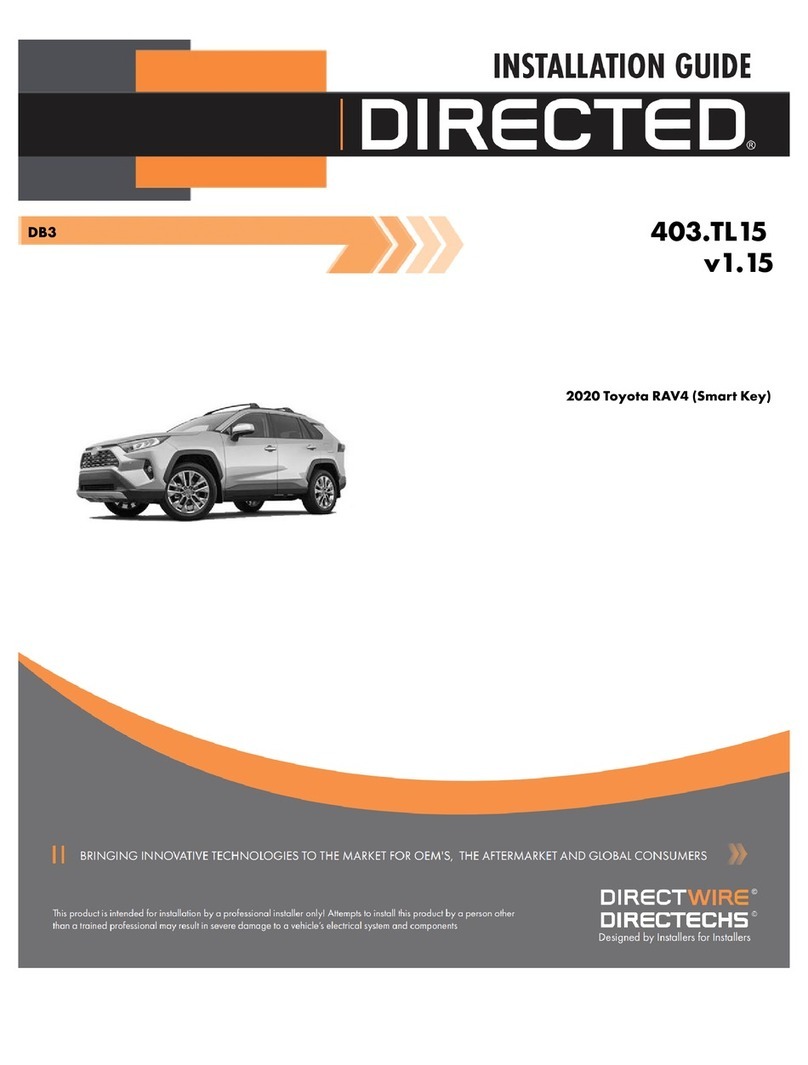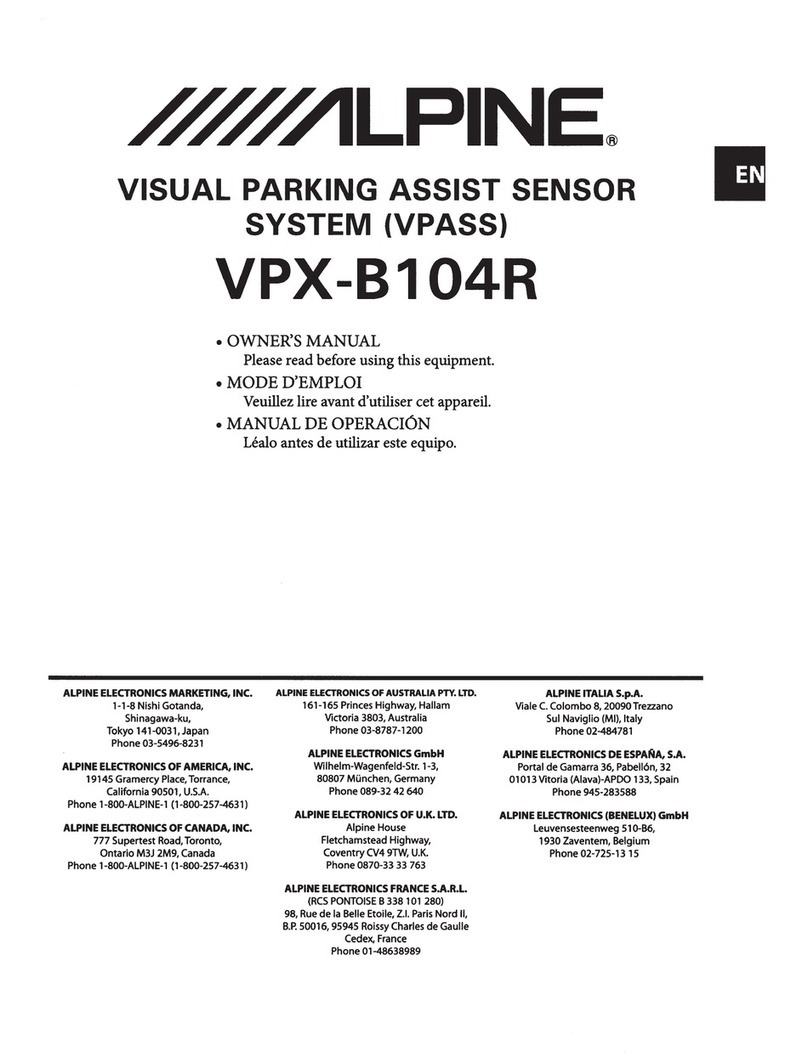EPS 301 User manual

REVA16

ii
TABLE OF CONTENTS
WARNINGS
GENERAL INFORMATION
SAFETY INFORMATION
OPERATING INSTRUCTIONS
INSTALLATION INSTRUCTIONS
ACCESSORY CONNECTIONS
MOTOR CONTROL
SCHEMATIC
INSTALLATION LAYOUT EXAMPLES
REVERSE OPERATION & MASTER / SLAVE
CONNECTIONS
MAINTENANCE
PARTS LIST
TROUBLE SHOOTING
1
2
3-4
4
5
7
8-9
10
11
13
14
15-24
25

1
WARNINGS:
Gate operator system designers, installers and users must take into account the
possible hazards associated with each individual application. Improperly designed,
installed or maintained systems can create risks for the user as well as bystanders. Gate
systems installation and design must reduce public exposure to potential hazards.
The operator is intended for installation for applications used for motor vehicles only.
Pedestrians must be supplied with a separate access opening. The pedestrian access
opening shall be designed to promote pedestrian usage. Locate the gate so that persons
will not come in contact with the vehicular gate during the entire path of travel of the
vehicular gate.
Keep all pedestrians out of the traffic lane and away from the moving gate. Signage
indicating "NO PEDESTRIANS" is recommended. NO ONE SHOULD CROSS THE PATH
OF THE MOVING GATE ARM.
Install safety devices such as loops and loop detectors, safety edges, and/or photo
beams in all installations to prevent the gate from closing on a vehicle.
Do not install the gate operator in a location where the arm can come within 16” of a
stationary object. The gate must be installed in a location so that enough clearance is
supplied between the gate and adjacent structures when opening and closing to reduce
the risk of entrapment.
Use only good quality pine for the gate arm. The use of materials other than wood may
result in damage to the gate operator.
Do not install any opening or closing device out of view of the gate when the devices are
operated. Controls shall be far enough from the gate arm or positioned to prevent the
user from coming in contact with the arm while operating the controls.
Stay clear of the pulleys, belts, and gate arm at all times.
Always turn off power before attempting any service.
FIGURE 1

2
GENERAL INFORMATION
Your parking gate has been designed to provide many years of reliable service. It
incorporates design features for all types of automatic parking control operations.
WARRANTY:
All equipment manufactured by Engineered Parking Systems is warranted against
defects in material and workmanship for one full year from date of shipment. All
equipment is tested and inspected before shipment. The warranty covers repairs or
replacement of any part that fails under normal usage. Transportation and labor
charges are to be paid by the customer.
GATE HOUSING:
The parking gate is constructed of eleven (11) gauge steel. It is of welded
construction with a top hinged access cover and a weatherproof door. The door is
fitted with a mounted key lock. Two keys are provided. The housing is finished with
powder coat paint.
OPERATING MECHANISM:
The gate arm is operated by a ½ HP instant reversing motor through a heavy duty
speed reducer with a 60:1 ratio. The gate arm flange is connected directly to the main
shaft. Adjustable cams are provided to limit gate arm travel. All internal parts are zinc
plated to prevent rusting.
ELECTRICAL CONTROLS:
The parking gate uses a self-contained, solid-state, plug-in controller. The field wiring
connections are to be terminated to the terminal panel. The terminal panel contains a
circuit breaker on/off switch and a manual raise/lower switch.
GATE ARM:
The gate arm comes in a standard 10 foot length, however 12, 14, and 16 foot lengths
are also available. They are finished in white and black diagonal stripes and are made
of pine. A minimum of two warning signs/placards must be installed in the area
of the gate. A warning sign/placard is to be installed on each side of the gate
and be visible by persons located on the side of the gate on which the warning
sign/placard is installed. Figure 1 illustrates a warning sign/placard.

3
CLASSES OF VEHICULAR GATES:
RESIDENTIAL VEHICULAR GATE OPERATOR –CLASS I- A vehicular gate operator (or system)
intended for use in a home of one to four single family dwelling, or a garage or parking area associated
therewith.
COMMERCIAL/GENERAL ACCESS VEHICULAR GATE OPERATOR –CLASS II –A vehicular gate
operator (or system) intended for use in a commercial location or building such as a multi-family
housing unit (five or more single family units), hotel, garages, retail store, or other building servicing the
general public.
INDUSTRIAL/LIMITED ACCESS VEHICULAR GATE OOPERATOR –CLASS III –A vehicular gate
operator (or system) intended for use in an industrial location or building such as a factory or loading
dock area or other locations not intended to service the general public.
RESTRICTED ACCESS VEHICULAR GATE OPERATOR –CLASS IV –A vehicular gate operator (or
system) intended for use in a guarded industrial location or building such as an airport security area or
other restricted access locations not servicing the general public, in which unauthorized access is
prevented via supervision by security personnel.
The Model 301 barrier gate operator in intended for use in Class II, III, and IV installations.
UL325 ENTRAPMENT PROTECTION REQUIREMENTS
This chart illustrates the entrapment protection requirements for each of the four
UL325 classes.
Exception: An operator for a vehicular barrier (arm) that is not intended to move
toward a rigid object closer than 16 inches (407 mm), is not required to be provided
with means to protect against entrapment.
Usage Class
Barrier (Arm) Gate
Primary Type
Secondary Type
Vehicular I and
II
Vehicular III
Vehicular IV
A or C
A, B1, B2, or C
A, B1, B2, C, or D
A, B1, B2, C, or D
A, B1, B2, C, D or E
A, B1, B2, C, D, or E
Note –The same type of device shall not be utilized for both the primary and the secondary entrapment
protection means.
Use of a single device to cover both the opening and closing directions is in accordance with the
requirement; however, a single device is not required to cover both directions. A combination of one
Type B1 for one direction and one Type B2 for the other direction is the equivalent of one device for the
purpose of complying with the requirements of either the primary or secondary entrapment protection
means.
Entrapment protection types:
Type A –Inherent entrapment protection system.
Type B1 –Provision for connection of, or supplied with, a non-contact sensor (photoelectric sensor or
the equivalent).
Type B2 –Provision for connection of, or supplied with, a contact sensor (edge device or the
equivalent).
Type C –Inherent adjustable clutch or pressure relief device.
Type D –Provision for connection of, or supplied with, an actuating device requiring continuous
pressure to maintain opening or closing motion of the gate.
Type E –An audio alarm.

4
IMPORTANT SAFETY INSTRUCTIONS
WARNING –TO REDUCE THE RISK OF INJURY OR DEATH:
1. READ AND FOLLOW ALL INSTRUCTIONS.
2. NEVER LET CHILDREN OPERATE OR PLAY WITH GATE CONTROLS.
3. Always keep people and objects away from the gate. NO ONE SHOULD
CROSS THE PATH OF THE MOVING GATE.
4. Test the gate operator monthly. The gate MUST reverse on contact
with a rigid object or stop when an object activates a non-contact
sensor. After adjusting the force or the limit travel, retest the gate
operator. Failure to adjust and retest the gate operator properly can
increase the risk of injury or death.
5. MAKE SURE THERE IS AT LEAST 16" CLEARANCE BETWEEN THE
GATE ARM AND ANY RIGID OBJECTS SUCH AS A WALL.
6. Install a minimum of 2 warning signs in the area of the gate. Each
warning sign shall be visible by persons located on each side of the
gate. The warning signs shall indicate the following:
· The gate is automatic and could move at any time, posing a serious
risk of entrapment.
· Children should not be allowed to operate the gate or play in the gate
area.
· The gate should be operated only when it is visible to the operator
and only when the area is free of people and obstructions.
· The entrance is for vehicles only. Pedestrians must use separate
entrance.
7. KEEP GATES PROPERLY MAINTAINED. Read the owner's manual.
Have a qualified service person make repairs to the gate hardware.
8. SAVE THESE INSTRUCTIONS.
WARNING –TO REDUCE THE RISK OF INJURY TO
PERSONS, USE THE OPERATOR ONLY WITH
INTENDED LENGTH OF GATE ARM
MODEL 301-10 = 10 FOOT WOODEN GATE ARM
MODEL 301-12 = 12 FOOT WOODEN GATE ARM
MODEL 301-14 = 14 FOOT WOODEN GATE ARM
MODEL 301-16 = 16 FOOT WOODEN GATE ARM
OPERATING INSTRUCTIONS
DO NOT INSTALL GATE ARM UNTIL GATE HAS BEEN TESTED FOR PROPER
OPERATION
TO PUT THE GATE INTO OPERATION:
Check all field wiring connections per the applicable drawing. Turn the circuit breaker on. The gate is
now ready for normal cycling operation. If it becomes necessary to remove the gate from service, turn
the circuit breaker off.
TO OPEN THE GATE IN AN EMERGENCY:
Put RAISE/LOWER switch to RAISE position. After the gate is opened, turn the circuit breaker off. The
gate arm will not lower with the circuit breaker in this position.
TO OPERATE THE GATE DURING POWER FAILURE:
Open door and switch circuit breaker OFF. Rotate the speed reducer pulley by hand until the gate arm
is in the desired position.

5
IMPORTANT INSTALLATION WARNING
WARNING –TO REDUCE THE RISK OF SEVERE INJURY OR DEATH
1. READ AND FOLLOW ALL INSTALLATION INSTRUCTIONS.
2. Install only the proper length and material of gate arm. An improper gate
arm could cause severe injury. Have a qualified service person make repair
to gate.
3. Do not connect operator to source of power until instructed to do so.
INSTALLATION INSTRUCTIONS
1. Concrete foundations, not more than 6” above the driveway, with anchor bolts and
conduit should be finished per the applicable installation drawings.
2. Gate should be left on the wooden shipping platform, with cardboard left around it for
protection until it is ready to be mounted on foundation.
3. When ready to install, remove cardboard carton and machine bolts from the bottom of the
wooden platform.
4. Position gate with door facing away from driveway. Once the gate is in position, anchor it
down with ½” flat washers, ½” lock washers, and ½” hex nuts. Lubricate the bolts before
installation.
5. Open the top cover and install speed reducer breather plug.
6. Connect interconnecting wires to the other parts in the system by referring to the field
wiring diagram (page 5). Be sure all power is OFF when hooking up L1 and Neut. All
electrical wiring must be connected exactly as indicated in the wiring diagrams.
7. Turn the circuit breaker in gate housing OFF. The gate is now ready to operate. Turn
power on at L1 and Neut.
8. Turn the circuit breaker on and check initial gate activation by operating the RAISE/LOWER
switch.
9. Make adjustments to the up and down limit switch cams as required. NOTE: DOWN limit
switch has the black wire and the UP limit switch has the red wire. ENSURE CIRCUIT
BREAKER IN GATE IS OFF WHILE MAKING LIMIT SWITCH ADJUSTMENTS. To adjust
the cams, loosen the allen set screws and rotate the cams to the desired setting. After the
adjustments have been made, turn the circuit breaker on and test the gate arm travel by
operating the RAISE/LOWER switch. Repeat adjustments if needed.
10. Gate arm may now be affixed to the gate arm flange by sliding the gate arm between the
flange and the break away flange cover and tightening down the four outside bolts.

6

7
ACCESSORY CONNECTIONS
All accessories are connected to the terminal panel. Disconnect power before connecting accessories.
VEHICLE DETECTOR CONNECTIONS:
Vehicle detectors are to be placed on the same shelf as the controller inside the gate housing.
**Safety/Close Vehicle Detector-Connect power according to the manufacturer’s instructions. Connect
presence relay common to terminal 7. Connect presence relay normally open to terminal 8. Connect
loop wire from detector and actual loop wires to terminals 21 and 22. Dipswitch #3 on control board is
on for safety/close operation.
**Safety Only Vehicle Detector-Connect the same as safety/close detector except dipswitch #3 is off for
safety only operation. Safety only operation is used when internal closing timer or a push button is
used for closing the gate.
**Free Open Vehicle Detector-Connect power according the manufacturer’s instructions. Connect
presence relay common to terminal 7. Connect presence relay normally open to terminal 10. Connect
loop wires from detector and actual loop wires to terminals 23 and 24.
OPENING DEVICE CONNECTIONS:
All opening devices such as card readers, cash registers, radio receivers, push buttons, telephone entry
systems, etc. should be installed according to the manufacturer’s instructions. Open input type should
be momentary dry contact. Connect common to terminal 7 and normally open to terminal 10. A
continuous contact across terminal 7 and 10 will cause the gate to remain open.
PUSH BUTTON STATION CONNECTIONS:
**Open Push Button-Normally pen contacts connect to terminals 7 and 10.
**Close Push Button-Normally open contacts connect to terminal 7 and 11.
**Stop Push Button-Remove jumper across terminals 2 and 3. Normally closed contacts connect to
terminals 2 and 3.

8
MOTOR CONTROL BOARD
DESCRIPTION OF FUNCTION SWITCHES
SETTING
SWITCH#
OPEN (OFF)
1
P1:
Requires that open signal be
set, then reset prior to
opening gate.
CLOSED(ON)
1
P1:
When other conditions allow,
initiates immediate opening
after setting of open input.
OPEN (OFF)
2
P2:
Requires that close signal be
set, then reset prior to
closing gate.
CLOSED (ON)
2
P2:
When other conditions allow,
initiates immediate closure
after setting of close input.
CLOSED (ON)
3
LATCH:
Causes immediate closing of
gate following setting and
resetting of safety while gate
is on open limit, if open
signal in not present.
CLOSED (ON)
4
INTERRUPT:
Stops all gate movement
when safety is set, hold until
safety is reset.
OPEN (OFF)
4
INTERRUPT:
Stops gate from closing
when safety is set. Prevents
closing until safety is reset.
CLOSED (ON)
5
SEQUENCE:
When gate is on open limit,
will initiate closure after
receiving open signal.
CLOSED (ON)
6
REVERSE:
Causes gate to open
following a stop or safety
input, unless gate is on close
limit.
CLOSED (ON)
7
WAIT:
Causes a 2 second delay in
any change in gate motion
direction.
OPEN (OFF)
8
CLOSE TIMER:
Starts when gate reaches
open limit, if open signal is
not present and safeties are
reset. Open input and
safeties when on will hold
timer off until cleared.
OPEN (OFF)
9
BRAKE:
Provides power to opposite
motor winding momentarily
upon reaching either limit
switch.
NOTE: On all configurations, switch 9 must be off for the brake to be active, and switch 8 must be off for closing
timer to be active.

9
ENTRY CONTROL 1000 CONTROL BOARD
DESCRIPTION OF L.E.D.’s
LED 1:
LED 2:
LED 3:
LED 4:
LED 5:
LED 6:
LED 7:
LED 8:
LED 9:
LED 10:
INPUT LIGHTS
(USED WITH DOUBLE DIRECTION LOGIC ONLY) ILLUMINATES WHEN CLOSING LOOP IS ACTIVATED
WHEN GATE IS WIRED FOR DOUBLE DIRECTION LOGIC.
(CLOSE) ILLUMINATES AS LONG AS CLOSE INPUT IS PRESENT.
(OPEN) ILLUMINATES AS LONG AS OPEN INPUT IS PRESENT.
(SAFETY) ILLUMINATES AS LONG AS SAFETY SIGNAL IS PRESENT OR AS LONG AS CLOSING LOOP IS
ACTIVATED.
LIMIT SWITCH LIGHTS
(CLOSE) ILLUMINATES WHEN GATE IS OPEN. (SHOWING WHAT NEXT FUNCTION IS GOING TO BE) OR
WHEN GATE IS IN MOTION. EXTINGUISHES WHEN GAE IS CLOSED (May be dim).
(OPEN) ILLUMINATES WHEN GATE IS CLOSED. (SHOWING WHAT NEXT FUNCTION IS GOING TO BE)
OR WHEN GATE IS IN MOTION. EXTINGUISHES WHEN GATE IS OPEN (May be dim).
(STOP) ALWAYS ILLUMINATE UNLESS STOP INPUT IS PRESENT. (OPEN CONTACTS ACROSS STOP
INPUT)
MOTOR LIGHTS
(CLOSE) ILLUMINATES WHILE MOTOR IS RUNNING IN CLOSE CYCLE.
(OPEN) ILLUMINATES WHILE MOTOR IS RUNNING IN OPEN CYCLE.
POWER LIGHT
(DC) ALWAYS ILLUMINATED UNLESS POWER IS REMOVED. (EX: BLOWN FUSE, ETC).

10

11
STANDARD SYSTEM #4
SINGLE DIRECTION CARD OR EQUIVALENT ENTRANCE OR EXIT
SYSTEM FUNCTION:
The patron inserts the entry card into the card reader, which causes the gate arm to rise. When
the vehicle leaves loop #1, the gate will return to the down position.
Suggested control board switch setting: 1, 2, 3, 6, 8 = ON
INCOMING POWER: 115 VAC 60 Hz 20 Amps
NOTE: THE LOOP IS CENTERED IN THE LANE
MAKE SURE THERE IS AT LEAST 16 INCHES OF CLEARANCE BETWEEN THE GATE ARM
AND ANY RIGID OBJECTS

12
STANDARD SYSTEM #8
DOUBLE DIRECTION CARD OR KEY ENTRANCE/FREE EXIT
SYSTEM FUNCTION:
The patron inserts the entry card into the card reader. This will cause the gate arm to rise,
permitting the vehicle to drive through. When the vehicle leaves loop #2, the gate arm will return
to the down position. When the vehicle approaches from the free side, loop #2 will be activated,
which will raise the gate arm, permitting the vehicle to drive through. As the vehicle leaves loop
#1, the gate will automatically return to the down position
Suggested control board switch setting: 1, 3, 6, 8 = ON
Auxiliary Board in controller is required for this configuration in units manufactured prior to May
2008.
INCOMING POWER: 115 VAC 60 Hz 20 Amps
NOTE: THE LOOP IS CENTERED IN THE LANE
MAKE SURE THERE IS AT LEAST 16 INCHES OF CLEARANCE BETWEEN THE GATE ARM
AND ANY RIGID OBJECTS

13
REVERSE OPERATION
In standard installations, the parking gate access door faces away from the lane. If you encounter
an obstacle that prevents access to the door, or if the gate needs to be reversed for a master /
slave application, follow these instructions for gate cabinet reversal.
NOTE: REMOVE GATE ARM AND DISCONNECT MAIN POWER BEFORE ATTEMPTING ANY
ADJUSTMENTS OR MODIFICATIONS.
Remove the motor by removing (4) 5/16” hex nuts.
Remove terminal cover on the back of the motor and swap terminal 1 with terminal 2
(white and green/red wires).
Re-install the motor.
Manually turn the pulley until the gate arm flange turns 180˚.
Rotate limit switch cams and adjust accordingly.
Make all final adjustments and tests before installing the gate arm.
MASTER / SLAVE INSTALLATION
For locations with very wide lanes, two gates can be installed in a master/slave configuration.
Gates are installed on opposite sides of the driveway to operate simultaneously. Use the wiring
diagram below to connect the gates together for simultaneous operation. If timer to close is
required, order model M.S. master/slave pack. (M.S. Pack not required on units manufactured
after May 2008.)

14
LUBRICATION AND GENERAL MAINTENANCE
THE FOLLOWING ROUTINE MAINTENANCE SHOULD BE CARRIED OUT TO
ENSURE YEARS OF TROUBLE FREE OPERATION.
EVERY 30 DAYS:
1. WASH AND WAX THE EXTERIOR SURFACE OF THE CABINET TO HELP MAINTAIN
THE POWDERCOAT SURFACE.
2. CHECK REBOUND SENSITIVITY AND ADJUST AS NECESSARY.
EVERY 60 DAYS:
1. CHECK AND TIGHTEN ALL NUTS, BOLTS, AND SCREWS THROUGHOUT THE GATE
OPERATOR.
2. CHECK THE UP AND DOWN LIMIT SWITCHES FOR ADJUSTMENT AND TIGHTNESS.
DO NOT MAKE ANY ADJUSTMENTS UNLESS THE GATE CIRCUIT BREAKER IS IN
THE OFF POSITION.
3. CHECK THE BELT TENSION AND PULLEYS FOR ALIGNMENT AND WEAR.
EVERY 12 MONTHS:
DRAIN AND REFILL THE SPEED REDUCER WITH SYNTHETIC GEAR OIL. (MOBIL
SHC634 OR EQUIVALENT). DO NOT OVERFILL.

15

16
PARTS LIST
301-10 PARKING GATE
MAIN FRAME
I.D. #
8
9
10
11
12
13
14
15
16
17
18
19
20
21
22
23
24
25
26
28
29
30
31
32
34
35
36
37
38
39
40
41
42
43
44
45
46
48
49
51
QUANT.
4
1
1
6
1
1
2
6
6
1
4
1
1
1
2
2
2
2
2
4
1
2
4
4
4
4
2
1
1
1
2
4
4
1
1
2
2
2
1
1
2
2
PART NUMBER
016-2000A
9000-16-2
9000-16-1
016-312-1000
050-8-2500
907-8
013-300-250
016-2
016-375-16NA
9602-1-1
015-300-500
097-250-1250
457-1
015-300-250
9601-1
010-500RS
010-2
010-6
006-1250RS
9000-10-1
492-1
006-2
006-632NA
015-2
015-750H
015-300-375
908-3
542-4L320
908-2
097-187-1000
015-312-18NA
015-2
541-6
9000-12-2
008-2
008-832NA
008-500RS
90-0003
GA-10
1051-45
1051-46
DESCRIPTION
3/8-16 X 2” SOCKET HD. BOLT
GATE ARM FLANGE COVER
GATE ARM FLANGE
3/8-16 X 1” CARRIAGE BOLT
#8 X 2 ½ TAPER PIN
1 ¼” FLANGE BEARING
¼-28 X ¼ ALLEN HD. SET SCREW
3/8 SPLIT LOCK WASHER
3/8-16 HEX NUT
1 ¼” OUTPUT SHAFT
5/16-18 ALLEN HD. SET SCREW
¼ X ¼ X 1 ¼ KEYSTOCK
60:1 SPEED REDUCER
AIR BREATHER
5/16-18 X ¼ ALLEN HD. SET SCREW
LIMIT SWITCH CAM
10-32 X ½ RD. HD. MS.
#10 SPLIT LOCK WASHER
#10 FLAT WASHER
6-32 X 1 ¼ RD. HD. M.S.
LIMIT SWITCH MTG. BRACKET
MICRO-SWITCH, ROLLER STYLE
#6 INTERNAL TOOTH LOCK WASHER
6-32 HEX NUT
5/16 SPLIT LOCK WASHER
5/16-18 X ¾ HEX HD. BOLT
5/16-18 X 3/8 ALLEN HD. SET SCREW
8” SPEED REDUCER PULLEY
4L320 V-BELT
2” MOTOR PULLEY
3/16 X 3/16 X 1 KEYSTOCK
5/16-18 HEX NUT
5/16 SPLIT LOCK WASHER
1/2 HP INSTANT REVERSING MOTOR
MOTOR MOUNTING RACKET
#8 INTERNAL TOOTH LOCK WASHER
8-32 HEX NUT
8-32 X ½ RD. HD. M.S.
TERMINAL/CONTROL PANEL, COMPLETE
10 FOOT WOODEN GATE ARM
6 ¾” X 3 ½” GATE ARM WARNING LABEL
8-1/2” X 11” WARNING SIGN

17
PARTS LIST SUPPLEMENT
301-12 PARKING GATE
MAIN FRAME
ADD:
OMIT:
1
1
1
1
1
1
908-26
542-4L360
9000-S12
908-3
542-4L320
9000-S10
10” SPEED REDUCER PULLEY
4L360 V-BELT
12 FOOT WOODEN GATE ARM
8” SPEED REDUCER PULLEY
4L320 V-BELT
10 FOOT WOODEN GATE ARM
PARTS LIST SUPPLEMENT
301-14 PARKING GATE
MAIN FRAME
ADD:
OMIT:
1
1
1
1
1
1
1
908-24
542-4L400
9000-27
9000-S14
908-3
542-4L320
9000-S10
12” SPEED REDUCER PULLEY
4L400 V-BELT
COUNTER BALANCE ASSEMBLY
14 FOOT WOODEN GATE ARM
8” SPEED REDUCER PULLEY
4L320 V-BELT
10 FOOT WOODEN GATE ARM
PARTS LIST SUPPLEMENT
301-16 PARKING GATE
MAIN FRAME
ADD:
OMIT:
1
1
1
1
1
1
1
908-24
542-4L400
9000-28
9000-S16
908-3
542-4L320
9000-S10
12” SPEED REDUCER PULLEY
4L400 V-BELT
COUNTER BALANCE ASSEMBLY
16 FOOT WOODEN GATE ARM
8” SPEED REDUCER PULLEY
4L320 V-BELT
10 FOOT WOODEN GATE ARM

18
PARTS LIST
301 PARKING GATE
HOUSING
I.D. #
1
2
3
4
5
6
7
QUANT.
1
1
1
1
1
1
1
PART NUMBER
9000-1-1
015-312-18WN
1051-24
1051-24A
806-1A
806-1
806-1B
DESCRIPTION
MAIN HOUSING, PARKING GATE
5/16-8 WING NUT
EPS NAME PLATE
EPS ELECTRICAL NAME PLATE
CAM LOCK NUT
CAM LOCK
KEY
This manual suits for next models
4
Table of contents
Other EPS Automobile Electronic manuals
